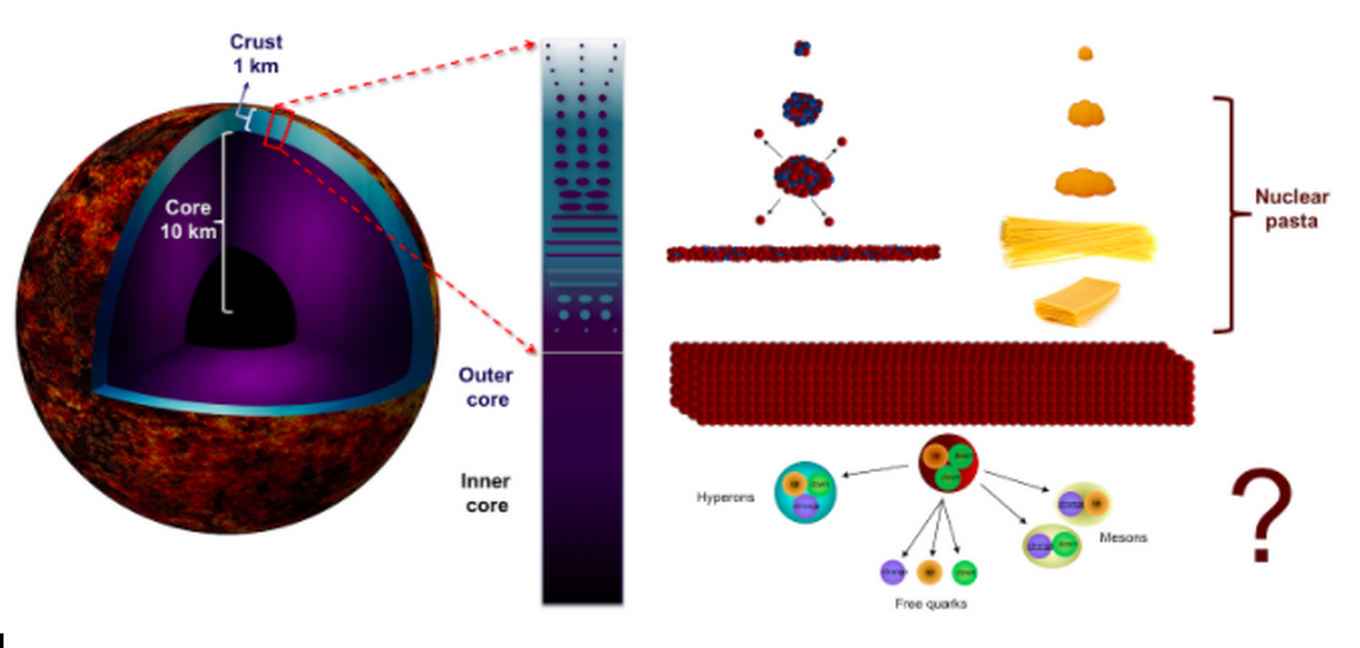Dense matter

Introduction
API's strengths in the study of dense matter and physics of high magnetic fields lie in observational radio and X-ray studies of neutron stars, and their theoretical interpretation.
API faculty use probe these extreme physical processes using:
- cooling of neutron stars that have been heated due to the accretion of matter
- thermonuclear explosions on the surface of a neutron star
- accretion outbursts of neutron stars
- the oscillations observed during such events
- pulsar studies
Pulsars also probe fundamentals of spacetime and gravity, e.g., via binary pulsars and pulsar timing arrays.
Current
API scientists are leading efforts to measure the mass and radius simultaneously for millisecond pulsars using the new technique of pulse profile modelling and data from NASA's NICER instrument.
In recent years, API researchers have made significant advances in measuring the neutron star equation of state and accretion processes by observations across the electromagnetic spectrum.
Future
The foreseeable future in this field will likely see the rewards from the long investments made here. Pulsar searches and pulsar timing will find a nanoHertz gravitational wave background and constrain early cosmology.
Accurate mass and radius determinations of neutron stars, and probing their interiors via pulse profile modelling and studies of their thermal evolution, will finally get us the long-sought strict constraints on the neutron star equation of state and physics of strong magnetic fields. At the same time, they will deepen our understanding of their formation and evolution.
Keywords
Neutron stars, dense matter, radio pulsars, X-ray pulsars, X-ray binaries, accretion, pulsar timing, binaries, magnetic fields
Facilities
Now: Rossi X-ray Timing Explorer (RXTE) archive, Neil Gehrels Swift Observatory (Swift), Neutron Star Interior Composition Explorer (NICER), Chandra X-ray Observatory, XMM-Newton, NuSTAR, LOFAR, Westerbork Synthesis Radio Telescope (WSRT), Arecibo, Green Bank Telescope (GBT), MeerKAT, LVKC, large-scale computing, CHIME
Future: ATHENA, enhanced X-ray Timing and Polarimetry mission (eXTP), X-ray Imaging and Spectroscopy Mission (XRISM), Imaging X-ray Polarimetry (IXPE), LOFAR2.0, Square Kilometre Array (SKA), Einstein Telescope, LIS